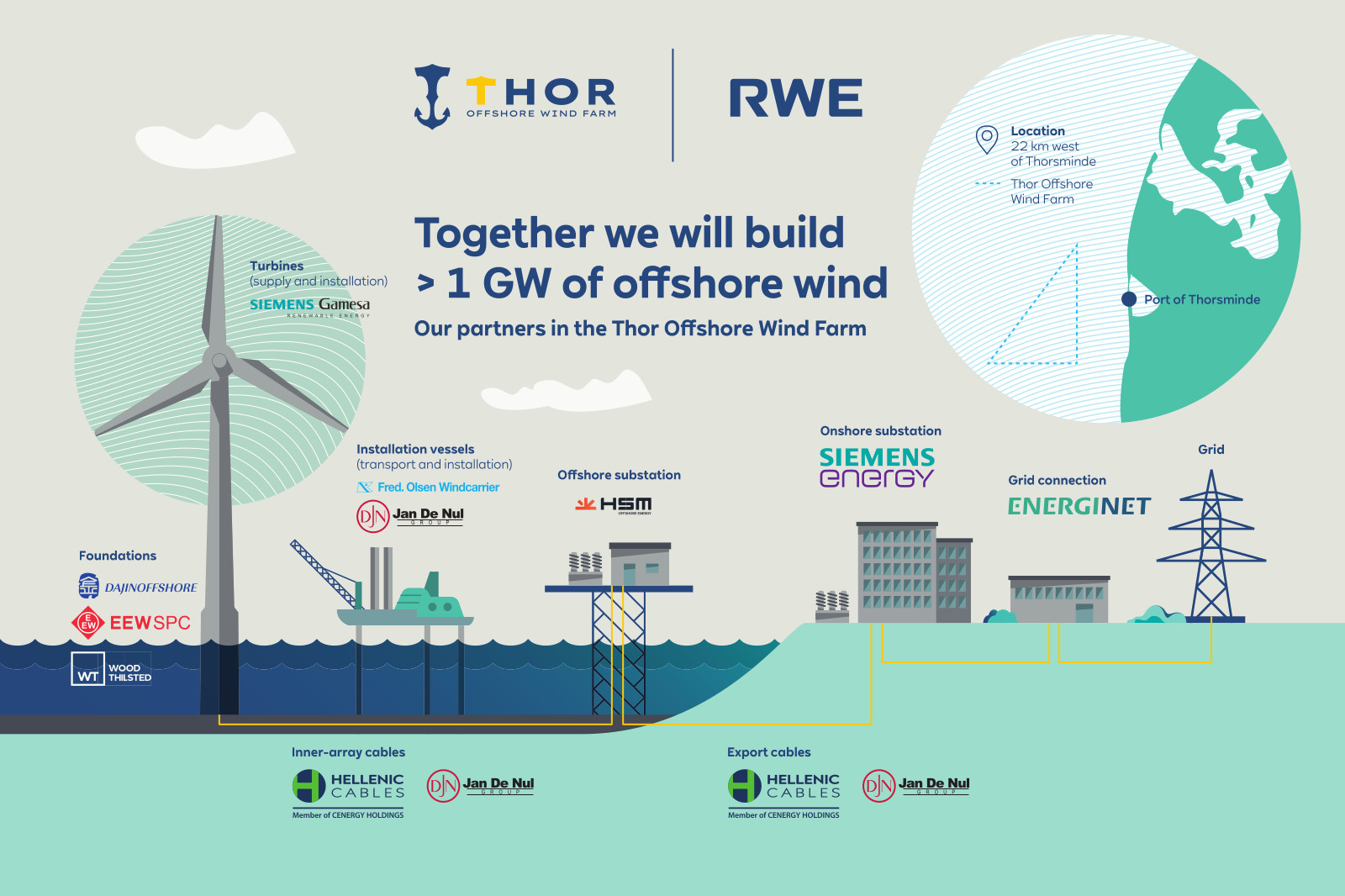RWE receives grant for Eemshydrogen project to build 50-megawatt electrolyser for production of green H2
29.04.2024

RWE is ready to take the next step in the construction of its Thor Offshore Wind Farm. From mid-April to the end of October, the onshore cable works will be carried out at and around the onshore substation south of Lemvig. The ground was broken at Thor offshore wind farm’s onshore substation in May last year. The onshore construction work is progressing according to plan.
The first part of the cable work will take place from mid-April to the end of June where horizontal directional drilling works will be carried out under the dune and a field immediately south of Tuskær. The drilling works will take place at depths of more than 20 metres to protect and preserve the dunes. Further smaller horizontal directional drilling works will be carried out along the approximately 4 kilometres cable route between the onshore substation at Volder Mark and the beach to avoid road closures and impact on protected waterways.
For safety reasons, a small construction area on the sourthern part of the beach will be cordoned off during the construction period. RWE therefore recommends that visitors use the northern part of the beach for bathing. There is a public entrance via Kjeldbjergvej, with parking available near the beach.
The landfall works are being carried out to enable two ducts to run under the dunes and the nearby field to prepare for cable pull-in next year. Each drill hole is approximately 425 metres long and the ducts will measure 71 centimetres in diameter. The duct sections will be welded together on the beach, from where they will be pulled through the drill holes.
East of Torsmindevej, the onshore cables will be divided into three phases each. They will be laid and buried during June and July and led to the onshore substation, where they will be connected. Joint bay, jointing and testing works will be carried out throughout July to October.
The subsea cables that will be led to the shore are export cables from the offshore substation, which will supply the substation on land. The subsea cables will be installed and connected to the onshore cables in 2025.
RWE is building Thor Offshore Wind Farm in the Danish part of the North Sea, approximately 22 kilometres off Thorsminde. With a planned capacity of more than 1,000 megawatts, Thor will be Denmark’s largest offshore wind farm to date. Once fully operational, which is planned no later than the end of 2027, Thor should be capable of producing enough green electricity to supply the equivalent of more than one million Danish households.
RWE is a leading global player in renewable energy. The Thor project supports the company’s goal of increasing its global offshore wind capacity from 3.3 to 10 gigawatts by 2030. RWE already operates the Danish offshore wind farm Rødsand 2, located south of Lolland, approximately 10 kilometres southeast of Rødbyhavn.